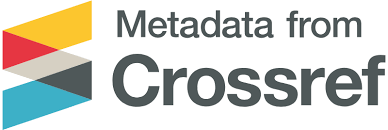Aplikasi Pengenalan Kerajinan Tangan Khas Kalimantan Tengah Menggunakan Augmented Reality Berbasis Android
DOI:
https://doi.org/10.47111/jointecoms.v1i3.8815Keywords:
Augmented Reality, Android, Handycrafts, Central KalimantanAbstract
Augmented Reality is an environment that incorporates 3D virtual objects into the real environment in real-time. This study aims to develop applications for handicrafts typical of Central Kalimantan based on Unity 3D. With this application, it is hoped that it can be useful to help elementary school students to get to know handicrafts in Central Kalimantan which has been almost extinct. And the purpose of this application is so that students can learn more interactively using the Android platform without having to go to a place for making or selling handicrafts typical of Central Kalimantan.Making this application is built using Unity, Blender, and Figma Web. The methodology used in making this application for introducing handicrafts typical of Central Kalimantan is the Multimedia Development Life Cycle (MDLC), namely Concept, Design, Material Collecting, Assembly, Testing and Distribution. Design the design with UML. This thesis incorporates AR technology into handicraft applications typical of Central Kalimantan, so that this handicraft application becomes more real with the presence of 3D objects in handicrafts. Then this application will track and detect the marker, if the marker is detected correctly it will open an image of a 3D handicraft object and an audio explanation. The results of this study indicate that the Unity 3D-based learning evaluation media is feasible to be used as a learning medium in the arts. This is evidenced by the positive assessment of material experts and media experts. The results of the study were also strengthened by the assessment of the students in the agree category from the 15 respondents. Meanwhile , in the calculation of the calculation scale model , the respondent 's answer score is 345. Meanwhile, in the Likert scale calculation, the percentage is 92%. Based on these data, it can be concluded that the Unity 3D-based learning application is feasible to be used as an evaluation medium for elementary school art learning.Downloads
Download data is not yet available.
DOI:
10.47111/jointecoms.v1i3.8815
DOI URL: https://doi.org/10.47111/jointecoms.v1i3.8815
Views:
42
|
Downloads:
50
Downloads
Published
2021-12-12
How to Cite
Angelina, C. C. ., & Putra, P. B. A. A. . (2021). Aplikasi Pengenalan Kerajinan Tangan Khas Kalimantan Tengah Menggunakan Augmented Reality Berbasis Android. Journal of Information Technology and Computer Science, 1(3), 210–219. https://doi.org/10.47111/jointecoms.v1i3.8815
Issue
Section
Articles


















